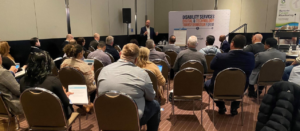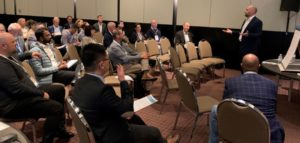How can providers harness the latest tech to be sustainable?
With disability and aged care providers experiencing a number of challenges to remain sustainable, many are looking to the latest innovations to improve inefficient operational processes and profit margins.
In the NDIS 2021-22 Q3 report, the NDIA reported 37,300 cancelled non-complying claims. This has affected 4,900 providers with incorrect or non-compliant payments totalling $43.5m.
While those numbers may be unexpected, the unfortunate thing is that I wasn’t completely surprised to read these figures. In my role as a disability and aged care consultant, I’m lucky to be able to speak to a range of providers, from small to large, to try to help them improve their care management processes. This has allowed me to identify common challenges that providers face across the healthcare sector—and non-compliant claims is one that features frequently.
I recently had the privilege of facilitating an interactive roundtable discussion with a range of providers at the joint Disability Services & Aged Care Digital and Technology Transformation Forums. Here, we sat down as a sector to discuss key challenges and the opportunities to leverage innovative technology to overcome them.

Key challenges for providers
The most discussed point of the day related to the lack of interoperability between systems. Providers typically have multiple isolated systems creating data silos. Not only does this create huge inefficiencies with the time required to navigate between the systems, it also leaves providers without a single source of truth for their data—whether this be information about their clients, their plan and services. Additionally, the reliance on paper-based systems further exacerbates heavily manual processes.
Another issue that was raised was the inability to operate sustainably within the current disability and aged care funding models. Similarly, the level of complexity of compliance requirements created another challenge for providers. With operating margins under increased pressure, it’s imperative that the disability and aged care sectors look at ways to lower operating costs and improve cash flow.
In response to these challenges, providers identified the top 3 technology priorities they’re looking for in their systems and processes:
- Digital connectivity to address stand alone systems and reduce data silos.
- Real-time capabilities for greater visibility of all operational activities.
- Improved processes and workflow efficiencies, and time reduction for administration.
How innovative tech can help
So how can providers solve the high priority challenges by harnessing the latest technology innovations? A number of good examples were shared highlighting some benefits of recent innovations and process improvements.
In response to the first point above, providers have found that significant time is saved from unnecessary multiple data entry. This reduces duplicate slow processes and results in less human error, lowering administrative costs. But perhaps the most significant benefit is having a single source of truth for information—especially when it comes to managing client data.
Secondly, cloud-based software supports providers to access data in one place and in real-time. One benefit is how much this simplifies the audit process. We recently sat down with Helen Conway, Project Manager at Ability Options who shared how previously the team would have to travel to a physical site to review paper notes in a locked filing cabinet for audits or spot checks—which is not an uncommon occurrence in the health sector. With their new Lumary solution, Helen explained how Ability Options now has transparency of all information with dashboards available to everyone from team leaders to the CEO. Learn more about the Ability Options digital transformation journey by watching their case study.
During the roundtable discussion, a provider shared how they have significantly improved the client experience by using real-time reporting and dashboards as part of their client communication. With improved visibility and insight, they are able to communicate more intelligently with clients about their plan and the utilisation of their funding for their care program. As a result, they’ve been able to deliver greater person-centred care and give their clients more choice and control.
API integrations were also raised in the roundtable session as a valuable tool in reducing admin load and risk of error through process automation, and introducing efficiencies throughout the entire claiming process. For example, with a direct NDIA API integration, providers have greater visibility of a participant’s plan and can manage their funding more effectively, including alerts for non-compliant claims before they submit them.
Jill Baldwin, Finance Senior at Everyday Independence, explained that by implementing a system with direct integration to Proda, it enables them to eliminate rejections when an NDIS plan has expired. Everyday Independence can now end Service Agreements in-line with the plan dates, which is improving their business sustainability and avoiding revenue leakage.
The exciting part about the NDIA API integration is that there are a number of these integrations that are already available or on their way which will improve a provider’s sustainability.

The importance of technology in long-term sustainability
The roundtable agreed that when reviewing solutions it’s critical to look beyond just the cost of software solutions and factor in solution benefits and cost savings. Savings can far outweigh initial costs, as seen in the NDIA API integration example above.
Related to managing this type of change, in the recent Lumary webinar series, our customers and experts discussed how to build a successful business case and navigate change management for digital transformation.
There are ready-made solutions that can help make care management easier and remove process inefficiencies. As margins tighten, industry leaders are using technology innovations to optimise their operations and improving profitability, and are recommending that the sector follow suit to remain sustainable.
I’m always interested to hear from disability and aged care providers, so if you have any questions or thoughts on the findings from the roundtable session, feel free to connect with me or get in touch via joseph.cregan@lumary.com.au.
If you’d like to learn more about how Lumary’s software can support you, you can also connect with the Lumary team today.
